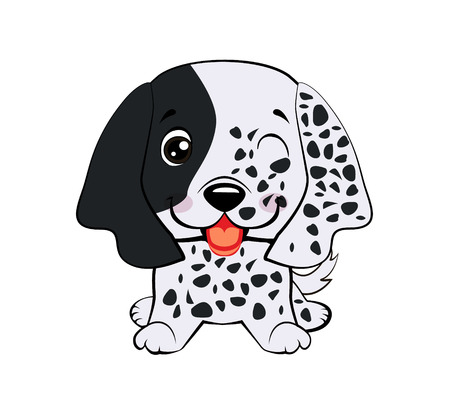Understanding Your Pets Nails
Before you pick up a nail clipper or grinder, it’s important to understand the anatomy of your pet’s nails and why regular grooming is essential. Both dogs and cats have nails that grow continuously, with a hard outer shell protecting the sensitive quick inside. The quick contains nerves and blood vessels, so trimming too close can cause pain or bleeding. For dogs, especially those who don’t walk much on hard surfaces, long nails can make walking uncomfortable, lead to joint issues, or even change their gait. Cats’ nails can get caught in fabrics or furniture if left too long, and overgrown claws might curl into their paw pads, causing pain or infection. Regular nail maintenance helps prevent these problems and supports your pet’s overall health and comfort. To determine when it’s time for a trim, listen for clicking sounds when your pet walks on hard floors or check if the nails are touching the ground when your pet stands still. For cats, look out for snagged claws on carpets or scratching posts. Staying on top of nail care ensures your furry friend stays happy and healthy.
Types of Nail Clippers and Grinders
When it comes to safe and effective pet grooming, choosing the right nail trimming tool is crucial. There are several types of nail clippers and grinders on the market, each designed to cater to different pet needs and owner preferences. Understanding the differences between these tools can help you select the best option for your furry friend.
Common Styles of Nail Clippers
| Type | Description | Best For |
|---|---|---|
| Scissor Clippers | Resemble regular scissors; feature curved blades for clean cuts. | Larger dogs or pets with thick nails. |
| Guillotine Clippers | Nail is inserted through a loop; blade slices when handles are squeezed. | Small to medium-sized pets with softer nails. |
| Electric Clippers | Motorized clippers provide power-assisted cutting. | Pets that resist manual clipping or need quick trims. |
Nail Grinders Explained
Nail grinders use a rotating file to gently grind down your pet’s nails rather than cutting them. They are especially useful for pets who dislike traditional clippers or have thick, dark nails where the quick is hard to see. Grinders allow for greater control and smoother edges, which can help prevent accidental scratches or splits.
How to Choose the Right Tool for Your Pet
- Pet Size & Nail Thickness: Large breeds often require sturdy scissor clippers, while guillotine styles suit smaller paws. Electric options work for both but may be noisier.
- Your Comfort Level: If you’re new to grooming, start with basic scissor clippers or a grinder with safety guards until you’re confident.
- Sensitivity: Nervous pets may tolerate grinders better since they avoid the sudden pressure of clipping.
- Maintenance & Cleaning: Consider how easy it is to clean and replace blades or grinding heads for long-term use.
Summary Table: Clippers vs. Grinders at a Glance
| Clippers | Grinders | |
|---|---|---|
| Main Benefit | Quick trim, low noise | Smooth finish, less chance of splitting nails |
| Main Drawback | Poor visibility can cause quicking (cutting into sensitive tissue) | Noisier, longer process |
| Best For | Pets tolerant of handling, clear nails | Nervous pets, thick/dark nails, smoothing rough edges |
By understanding these options, you’ll be better equipped to choose the safest and most comfortable nail trimming solution for your pet’s needs.

3. How to Safely Trim or Grind Your Pet’s Nails
Step-by-Step Instructions for Nail Clippers
Step 1: Gather the Right Tools
Before you start, make sure you have a pair of sharp, pet-specific nail clippers, styptic powder (in case of accidental bleeding), and plenty of treats to reward your pet.
Step 2: Prepare Your Pet
Find a quiet, comfortable space. Gently hold your pet’s paw and reassure them with a calm voice and gentle strokes. If your pet is nervous, take breaks and try to keep the experience positive.
Step 3: Identify the Quick
The quick is the pinkish area inside the nail that contains nerves and blood vessels. For pets with light nails, it’s easy to see. For dark nails, trim small amounts at a time to avoid hitting the quick.
Step 4: Clip Small Amounts
Hold the clipper at a slight angle and trim just the tip of the nail. Avoid squeezing or crushing the nail. If you see a black dot in the center, stop cutting—this means you’re close to the quick.
Step 5: Reward Your Pet
After each paw, give your pet a treat and praise them. Positive reinforcement helps make future grooming sessions easier.
Tips for Using Nail Grinders Safely
Step 1: Get Your Pet Used to the Grinder
Turn on the grinder near your pet so they can get used to its sound. Let them sniff it and offer treats to create a positive association.
Step 2: Start Grinding Slowly
Gently touch the grinder to the tip of one nail and grind in short bursts. Avoid holding the grinder in one place for too long, as friction can cause heat buildup and discomfort.
Step 3: Watch for the Quick
Grind slowly and check frequently. As with clipping, stop if you see a gray or pink circle appear in the center of the nail.
Avoiding Common Mistakes
Always use tools designed for pets, never rush through a grooming session, and don’t forget to reward calm behavior. If you accidentally cut into the quick and cause bleeding, apply styptic powder immediately to stop it.
4. Safety Tips and Common Mistakes to Avoid
Ensuring your pet’s grooming session is both safe and stress-free is essential. Nail clipping and grinding can be intimidating for both you and your furry friend, but following a few practical safety tips can make the process much smoother. Below are key pieces of advice and common mistakes to steer clear of when using nail clippers or grinders:
Practical Safety Tips for Grooming
- Choose the Right Time: Pick a moment when your pet is calm, such as after a walk or playtime.
- Have Styptic Powder Ready: Accidents can happen. Keep styptic powder nearby to stop any bleeding quickly if you accidentally cut the quick.
- Use Proper Restraint: Gently hold your pet’s paw, but avoid applying too much pressure or causing discomfort.
- Start Slow: Let your pet get used to the tools by allowing them to sniff and investigate before beginning.
- Reward Good Behavior: Use treats and praise to create a positive association with grooming sessions.
Common Mistakes and How to Avoid Them
| Mistake | Why Its a Problem | How to Avoid It |
|---|---|---|
| Cutting too close to the quick | This can cause pain and bleeding | Trim small amounts at a time; look for the translucent area in light-colored nails |
| Using dull blades or worn-out grinders | Dull tools can crush the nail instead of cutting cleanly, leading to discomfort | Regularly check and replace blades or grinder heads as needed |
| Skipping regular trims | Nails that are too long can split or break, causing injury | Create a consistent grooming schedule (every 3-4 weeks) |
| Moving too quickly | This can startle your pet, making them anxious about future trims | Take breaks as needed, especially if your pet seems stressed or restless |
| Ineffective restraint techniques | Poor restraint may lead to sudden movements and accidental injury | If possible, have another person help; use gentle holds rather than forceful grips |
| Ignoring signs of discomfort or pain | Pushing through can create lasting fear of grooming tools or sessions | If your pet pulls away or yelps, stop and comfort them before continuing |
Additional Guidance for a Smooth Experience
- If you’re nervous about trimming nails yourself, ask your vet or a professional groomer for a demonstration first.
- Avoid grooming when you’re rushed—patience leads to better results for everyone involved.
- Always inspect paws after grooming for signs of irritation or injury.
- If your pet has dark nails and you can’t see the quick, err on the side of caution by trimming less at each session.
By following these safety tips and avoiding common mistakes, you’ll build confidence in your grooming skills while keeping your pet comfortable and healthy. Consistency, patience, and positive reinforcement are key for stress-free nail care!
5. Recommended Products and Maintenance
Top Vet-Approved Nail Clippers and Grinders in the US
When it comes to grooming your pet’s nails safely, choosing the right tool is essential. Here are some of the most popular, vet-approved options available in the US:
Best Nail Clippers
- Safari Professional Nail Trimmer: A favorite among groomers and pet parents alike for its comfortable grip and sharp stainless steel blades, making quick, clean cuts.
- Miller’s Forge Dog Nail Clippers: Known for their durability and precision, these clippers are recommended by many veterinarians for both dogs and cats.
- BOSHEL Dog Nail Clippers: These feature a safety stop to prevent over-cutting, and a non-slip handle for better control.
Top-Rated Nail Grinders
- Dremel 7300-PT Pet Nail Grooming Tool: This cordless grinder is quiet, easy to use, and perfect for pets sensitive to traditional clippers.
- Casfuy Dog Nail Grinder: Highly rated for its low noise output and adjustable speeds, making it ideal for anxious animals or beginners.
Tool Maintenance Tips
To keep your nail grooming tools safe and effective, regular maintenance is key:
- Clean after every use: Wipe blades or grinding heads with alcohol wipes or mild soap and water to remove nail debris and bacteria.
- Sharpen as needed: Dull clipper blades can split nails; sharpen or replace them when you notice decreased performance.
- Check batteries on grinders: Recharge or replace batteries regularly to ensure consistent power and avoid snagging your pet’s nails.
- Store safely: Keep all grooming tools in a dry place out of reach of children and pets to prevent accidents and rusting.
A Little Care Goes a Long Way
Investing in the right products—and maintaining them properly—not only makes at-home nail trims easier but also keeps your furry friends safe from injury. Choose quality tools, keep them clean, and enjoy stress-free pet grooming sessions at home!
6. What to Do If You Accidentally Cut the Quick
Even with the best pet grooming tools and techniques, accidents can happen—especially when trimming your pet’s nails. The “quick” is the sensitive part inside your pet’s nail that contains nerves and blood vessels, and cutting it can cause bleeding and discomfort. Here’s how to handle the situation calmly and effectively:
Immediate First-Aid Steps
Stay Calm and Keep Your Pet Still
Your reaction sets the tone for your pet. Take a deep breath and speak in a soothing voice. Try to gently restrain your pet without causing more stress.
Apply Pressure to Stop Bleeding
Use a clean paper towel or gauze pad to apply gentle pressure to the tip of the nail. This helps slow the bleeding while you prepare other first-aid materials.
Use Styptic Powder or Cornstarch
If you have styptic powder (available at most pet stores), dip your pet’s nail into it or use an applicator to press it onto the wound. No styptic powder on hand? Cornstarch or even plain flour can work in a pinch to help clot the blood.
Keep the Area Clean
Once bleeding has stopped, gently wipe away any excess powder and check for continued bleeding. If necessary, reapply pressure and powder.
How to Keep Your Pet Calm
Offer Reassurance and Comfort
Gently pet and talk softly to your dog or cat. Offer treats as a distraction and reward for good behavior during this stressful time.
Take Breaks if Needed
If your pet is especially anxious, pause the grooming session and allow them time to relax before continuing. For future trims, go slowly and only trim small amounts at a time to avoid hitting the quick again.
When to Seek Veterinary Help
If bleeding doesn’t stop after 20 minutes, or if you notice swelling, excessive pain, or signs of infection later on, contact your veterinarian for advice.
Accidents are a normal part of learning how to groom your pet safely at home. Being prepared with first-aid supplies and knowing how to react will help both you and your furry friend feel more confident during every nail trimming session.


